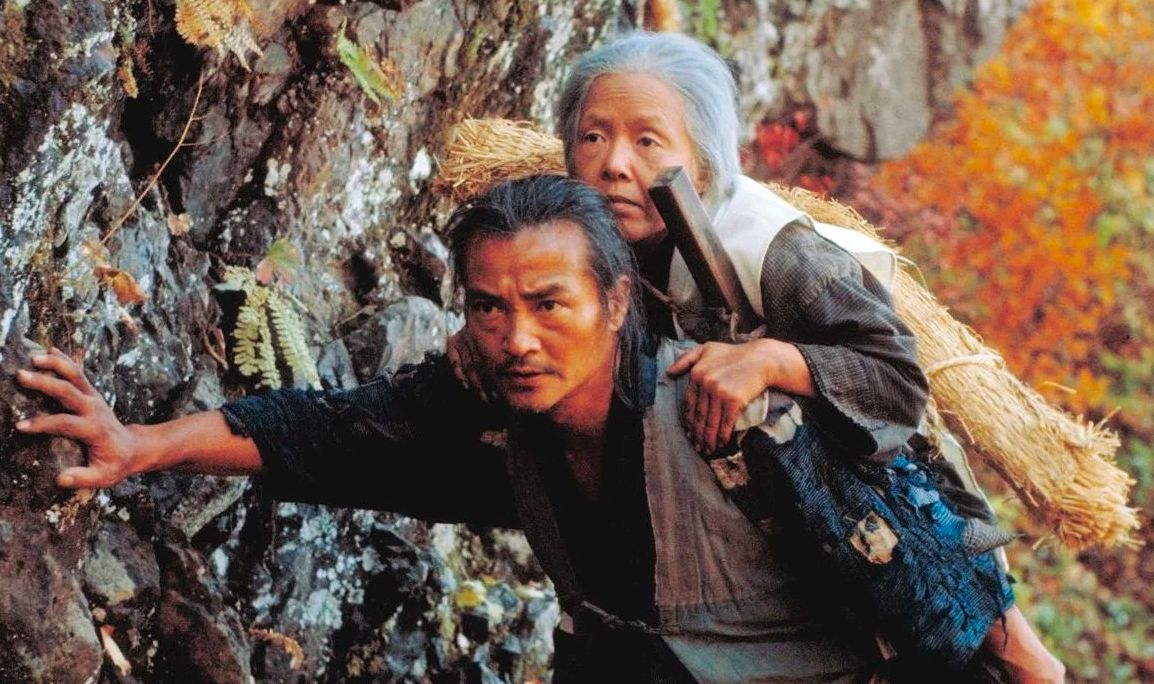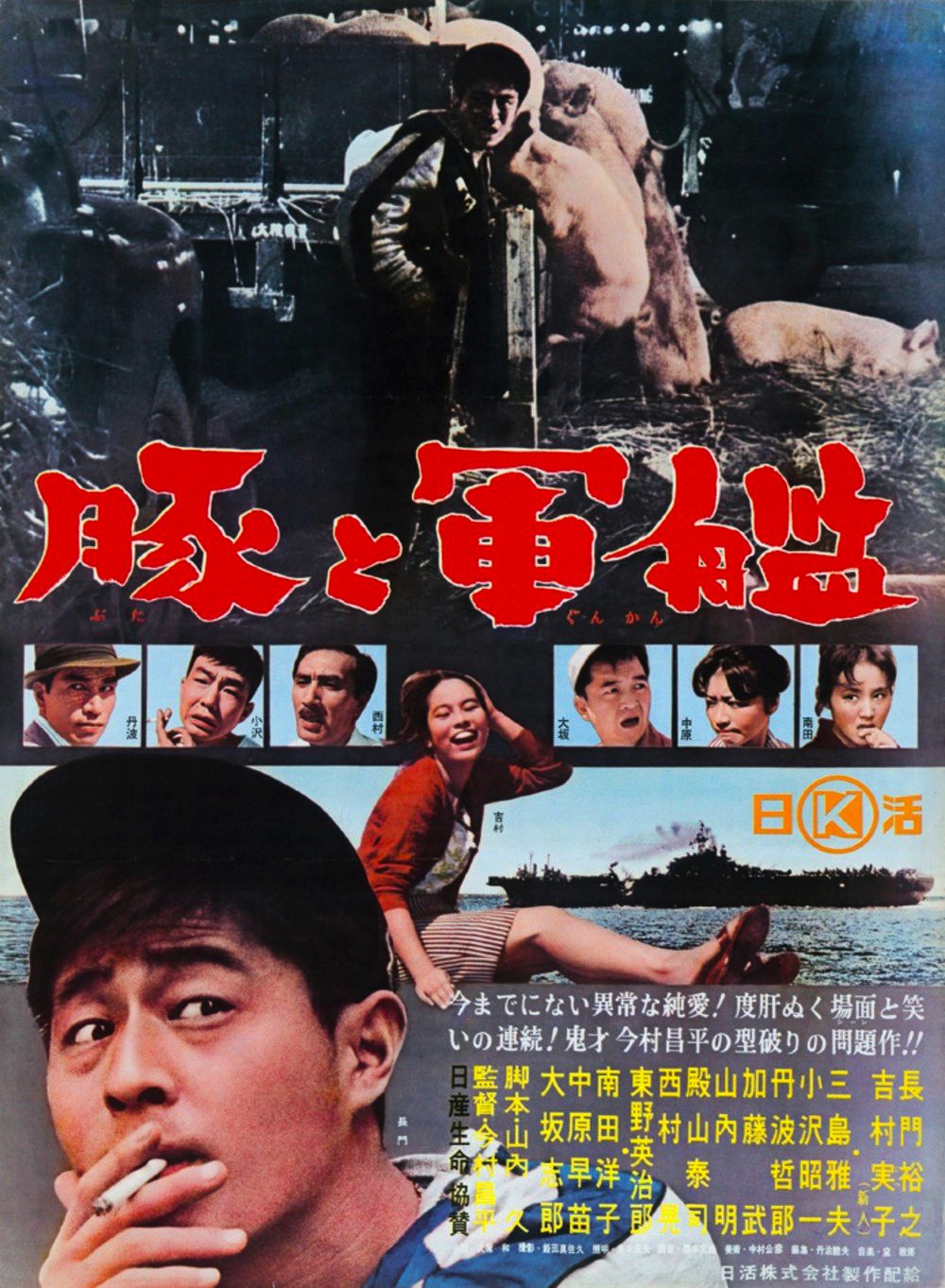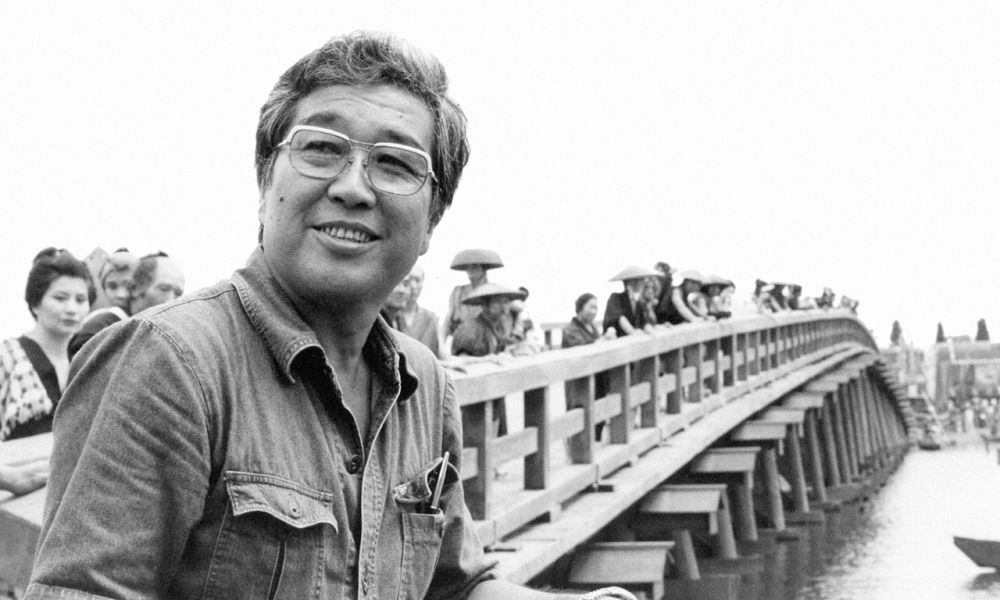"Outrageous, insightful, sensuous, and great fun to watch, the films of Shohei Imamura are among the greatest glories of postwar Japanese cinema… Imamura has stated that he likes to make ‘‘messy films,’’ and it is the explosive, at times anarchic quality of his work that makes him appear ‘‘uncharacteristically Japanese’’ when seen in the context of Ozu, Mizoguchi, or Kurosawa." - Richard Peña (International Dictionary of Films and Filmmakers, 2000)
Shohei Imamura
Key Production Country: Japan
Key Genres: Satire, Comedy Drama, Drama, Psychological Drama, Black Comedy, Rural Drama, Erotic Drama, Documentary, Period Film, Crime, Marriage Drama, War Drama
Key Collaborators: Shoichi Ozawa (Character Actor), Hajime Okayasu (Editor), Mutsuo Tanji (Editor), Shinichiro Ikebe (Composer), Toshiro Mayuzumi (Composer), Kazuo Kitamura (Character Actor), Mitsuko Baisho (Leading Character Actress), Shigeru Tsuyuguchi (Leading Character Actor), Ken Ogata (Leading Actor), Keiji Hasebe (Screenwriter), Sinsaku Himeda (Cinematographer), Shigeru Komatsubara (Cinematographer)
Key Genres: Satire, Comedy Drama, Drama, Psychological Drama, Black Comedy, Rural Drama, Erotic Drama, Documentary, Period Film, Crime, Marriage Drama, War Drama
Key Collaborators: Shoichi Ozawa (Character Actor), Hajime Okayasu (Editor), Mutsuo Tanji (Editor), Shinichiro Ikebe (Composer), Toshiro Mayuzumi (Composer), Kazuo Kitamura (Character Actor), Mitsuko Baisho (Leading Character Actress), Shigeru Tsuyuguchi (Leading Character Actor), Ken Ogata (Leading Actor), Keiji Hasebe (Screenwriter), Sinsaku Himeda (Cinematographer), Shigeru Komatsubara (Cinematographer)
“Part of the Japanese New Wave of the 60’s, influenced by the French New Wave and moving away from traditional Japanese subjects. His films are mostly concerned with social outcasts and/or sexual deviants.” - Ronald Bergan (A-Z of Movie Directors, 1983)
"Imamura came of age in a Japan of convulsions, and he has been fascinated by lowlife sexuality, prostitution, and television. He has exhibited a robust, sensual approach that is not unlike the style of Dennis Potter. In the seventies, he stepped aside from feature filmmaking to do a series of TV documentaries with a special interest in the lost soldiers of Japan and the prostitutes that the country had employed or dragooned. This period also crystallized his belligerent, ironic wariness with documentary—as evident in A Man Vanishes… There’s no denying the energy of his best work, the unruly inventiveness, and the subversive attitudes. Thus, his Cannes prizewinner, Ballad of Narayama, is a brutally physical realization of a cherished Japanese legend.“ - David Thomson (The New Biographical Dictionary of Film, 2010)

The Ballad of Narayama (1983)
“Imamura began in film as Yasujiro Ozu’s assistant, working most notably on Tokyo Story (1953), before directing his own films which were the anarchic, rough-hewn antithesis of his master’s stately gentility… Imamura wa something of an iconoclast, consciously rebelling against Japanese studio strictures and the style of Ozu and becoming, along with Nagisa Oshima and Masahiro Shinoda, a key member of the Japanese New Wave.” - Lloyd Hughes (The Rough Guide to Film, 2007)
“From the start, Imamura’s films displayed some of the qualities that would later characterize his work: robust energy, sensuous earthiness, and a ribald, often outrageously off-color, sense of humor. Gradually he emerged as one of the leading figures of postwar Japanese cinema, an insightful, creative artist with a near-scientific interest in Japanese culture and society, new and old, and a flair for depicting the human condition audaciously and entertainingly.” - The Film Encyclopedia, 2012
“Shohei Imamura’s films dig beneath the surface of Japanese society to reveal a wellspring of sensual, often irrational, energy that lies beneath. Along with his colleagues Nagisa Oshima and Masahiro Shinoda, Imamura began his serious directorial career as a member of the New Wave movement in Japan… Imamura focuses on the lower classes, with characters who range from bovine housewives to shamans, and from producers of blue movies to troupes of third-rate travelling actors. He has proven himself unafraid to explore themes usually considered taboo, particularly those of incest and superstition.” - Linda Ehrlich (The Virgin International Encyclopedia of Film, 1992)
"Japanese director whose movies often tackle taboo subjects such as incest and superstition; often uses themes of the struggling heroic woman… Like many filmmakers, Shohei Imamura frequently cited fellow Japanese directors Akira Kurosawa and Yasujiro Ozu as two of his greatest inspirations. Unlike many filmmakers, however, Imamura's own stature as a filmmaker is such that he is often mentioned in the same breath as those fellow late, great directors. At the least, he is considered one of the leading names of Japan's second wave of cinema." - Joshua Klein (501 Movie Directors, 2007)
Selected Filmography
{{row.titlelong}}
GF Greatest Films ranking (★ Top 1000 ● Top 2500)
21C 21st Century ranking (☆ Top 1000)
T TSPDT S Martin Scorsese
21C 21st Century ranking (☆ Top 1000)
T TSPDT S Martin Scorsese
Shohei Imamura / Favourite Films
Apocalypse Now (1979) Francis Ford Coppola, Ballad of Narayama (1958) Keisuke Kinoshita, The Balloon (1956) Yuzo Kawashima, Drunken Angel (1948) Akira Kurosawa, Early Summer (1951) Yasujiro Ozu, The Long Absence (1961) Henri Colpi, The Sun Legend of the End of the Tokugawa Era (1957) Yuzo Kawashima, Tokyo Story (1953) Yasujiro Ozu.
Source: Crazy Journey in Film (2004)
Apocalypse Now (1979) Francis Ford Coppola, Ballad of Narayama (1958) Keisuke Kinoshita, The Balloon (1956) Yuzo Kawashima, Drunken Angel (1948) Akira Kurosawa, Early Summer (1951) Yasujiro Ozu, The Long Absence (1961) Henri Colpi, The Sun Legend of the End of the Tokugawa Era (1957) Yuzo Kawashima, Tokyo Story (1953) Yasujiro Ozu.
Source: Crazy Journey in Film (2004)
Shohei Imamura / Fan Club
Bong Joon-ho, Tim Robey, Mark Cousins, Shin'ya Tsukamoto, Isamu Hirabayashi, Tadao Sato, Jasper Sharp, Paolo Bertolin, Kim Young-Jin, Jennie Livingston, Kristy Matheson, Chuck Stephens.
Bong Joon-ho, Tim Robey, Mark Cousins, Shin'ya Tsukamoto, Isamu Hirabayashi, Tadao Sato, Jasper Sharp, Paolo Bertolin, Kim Young-Jin, Jennie Livingston, Kristy Matheson, Chuck Stephens.
"Fan Club"
These film critics/filmmakers have, on multiple occasions, selected this director’s work within film ballots/lists that they have submitted.
These film critics/filmmakers have, on multiple occasions, selected this director’s work within film ballots/lists that they have submitted.


